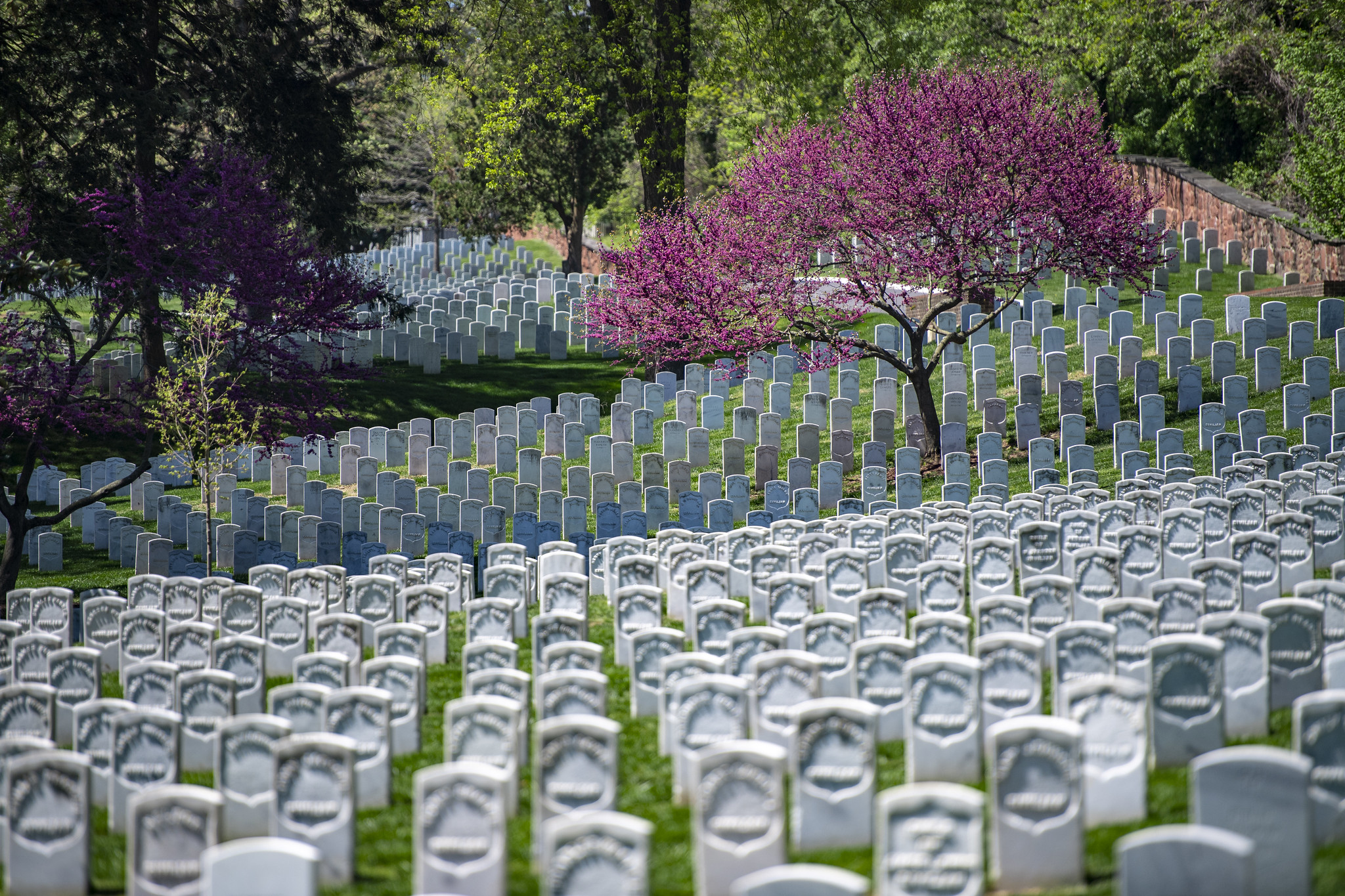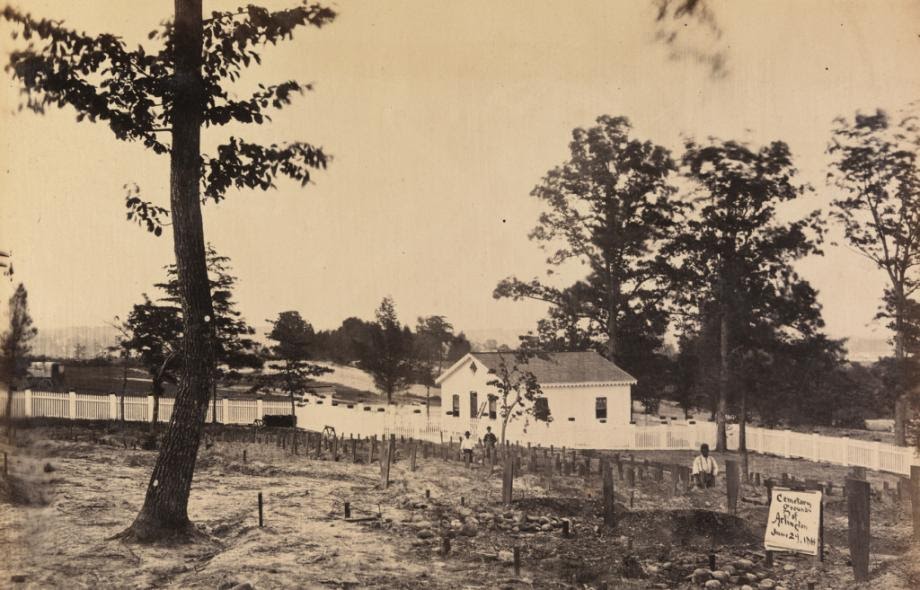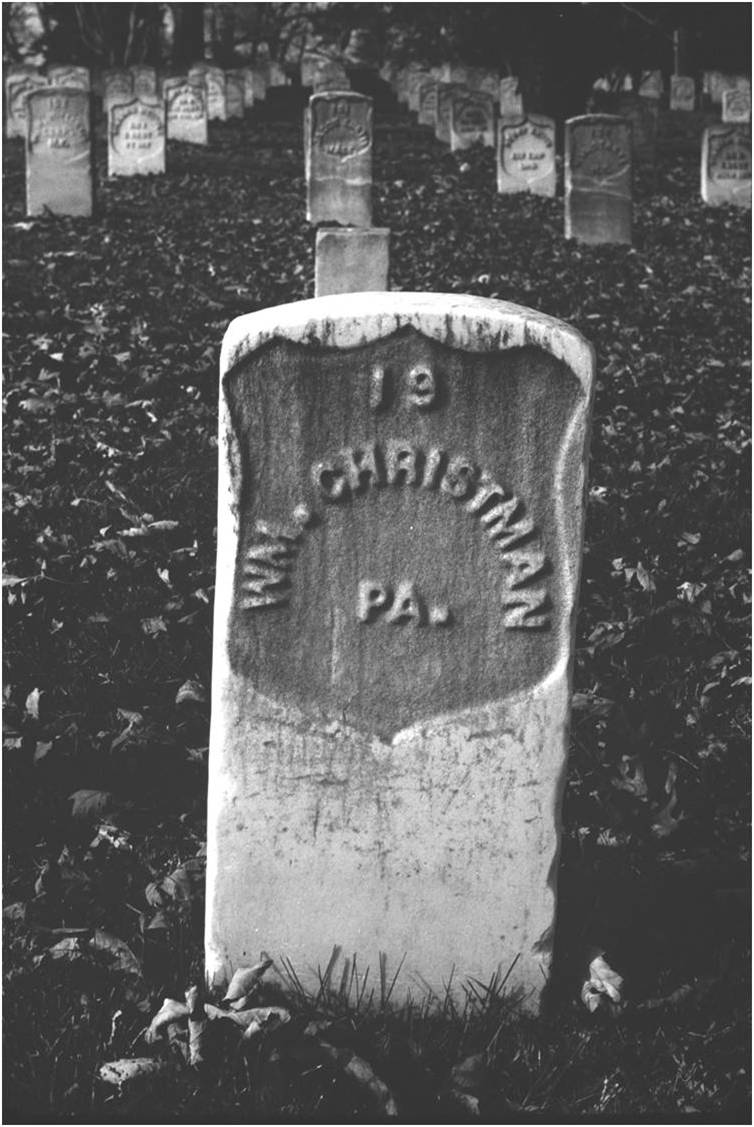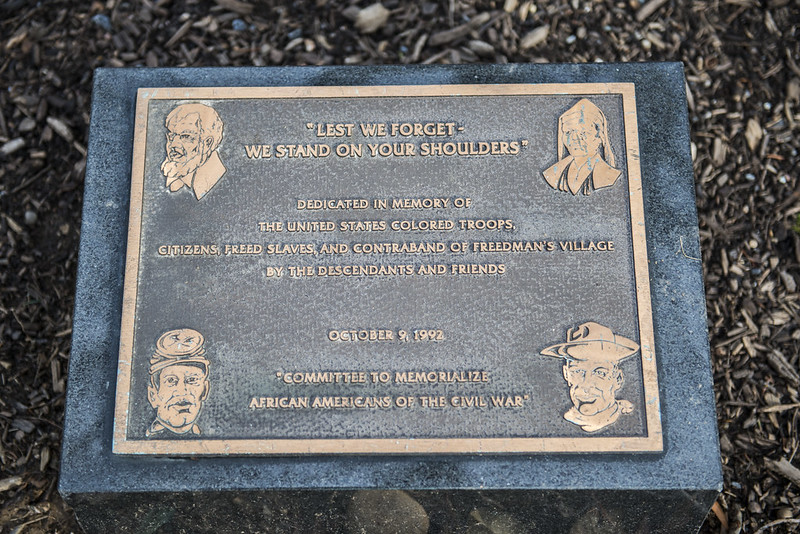Section 27

One of the oldest sections of Arlington National Cemetery, Section 27 dates from 1864, when the U.S. Army conducted the first military burials on the property. Its headstones tell stories of honorable service and sacrifice, and also document the history of slavery, segregation and struggles for freedom and equality. In essence, Section 27 is a microcosm of the cemetery’s rich, diverse history—which, in turn, is a microcosm of the history of the United States.
During the Civil War (1861-1865), both Union and Confederate wounded were often transported to hospitals in the Washington, D.C. area. By the third year of the war, the increasing number of fatalities was outpacing the burial capacity of Washington, D.C. cemeteries. To meet the demand for burial space, on May 13, 1864, the U.S. Army designated a section of the Arlington plantation for military burials.

The first graves in Section 27, June 29, 1864. (Chrysler Museum of Art/Andrew Joseph Russell)
From May 13 through June 1864, more than 1,000 service members were buried in what was then known as the “Lower Cemetery”— today’s Section 27, at the northern end of the cemetery near Ord & Weitzel Drive. During this period, before Arlington became a national cemetery, Lower Cemetery burials were racially integrated. White and Black service members, as well as civilian employees of the U.S. government, were buried side by side. In addition, interments in the Lower Cemetery initially included hundreds of Confederate soldiers who died in Washington, D.C. area hospitals.
On June 15, 1864, Secretary of War Edwin Stanton designated 200 acres of Arlington plantation as a national cemetery. Once Arlington became a national cemetery, all subsequent burials were segregated by race and military rank until President Harry S. Truman desegregated the military in 1948. The Lower Cemetery became Section 27, an African American burial area.
Section 27 Facts
• The first four military burials at Arlington are in Section 27:
 - Private William Henry Christman (67th Pennsylvania Volunteer Infantry Regiment): First military burial. Christman, a 20-year-old farmer, enlisted in March 1864. Like so many other Civil War soldiers, he soon succumbed to illness, dying from rubella in a Washington, D.C. hospital on May 11, 1864. Two days later, he became the first soldier interred at Arlington. (Section 27, Grave 19)
- Private William Henry Christman (67th Pennsylvania Volunteer Infantry Regiment): First military burial. Christman, a 20-year-old farmer, enlisted in March 1864. Like so many other Civil War soldiers, he soon succumbed to illness, dying from rubella in a Washington, D.C. hospital on May 11, 1864. Two days later, he became the first soldier interred at Arlington. (Section 27, Grave 19)
- Private William H. McKinney (17th Pennsylvania Cavalry): First service member buried at Arlington with his family present. The 17-year-old soldier succumbed to illness at a Washington, D.C. hospital and became the second service member laid to rest at Arlington, and the first to have a funeral service attended by his family, on May 13, 1864. (Section 27, Grave 98)
- Private William Blatt (49th Pennsylvania Infantry): First battle casualty interred at Arlington. While fighting in General Ulysses S. Grant’s Overland Campaign, Blatt was seriously wounded on May 10, 1864 and died in a hospital three days later. On May 14, 1864, he became the third soldier and the first combat casualty interred at Arlington. (Section 27, Grave 18)
- Private William Reeves (76th New York Infantry): First draftee interred at Arlington, May 13, 1864. At 19 years of age, Reeves was inducted into service in August 1863. Less than a year later, he died from a gunshot wound received during the Overland Campaign. Reeves was the fourth soldier and first draftee interred at Arlington. (Section 27, Grave 99)
• On May 15, 1864, two unknown U.S. soldiers were interred in Section 27. They were the first of nearly 5,000 unknowns to eventually be buried at Arlington National Cemetery, which include those buried at the Tomb of the Civil War Unknowns and the Tomb of the Unknown Soldier.

• Approximately 1,500 United States Colored Troops (U.S.C.T.) are interred in Section 27. U.S.C.T. were regiments in the U.S. Army composed mainly of African American soldiers (and white officers) who fought in the Civil War and, during the following decades, in the so-called “Indian Wars” in the American West. The United States Colored Troops was the official designation of African American regiments during the Civil War. Read more about these regiments here.
• More than 3,800 African American “freedpeople” are interred in Section 27. During the era of the Civil War, freedpeople included both formerly enslaved people who escaped from the South and free African Americans from the North. Thousands of freedpeople lived in the national capital region, in settlements managed by the Freedmen’s Bureau (an agency established by the War Department in 1865 to assist formerly enslaved people). Note: According to burial records, no residents of Arlington’s own Freedman’s Village, an African American settlement that existed on the property from 1863 to 1900, are buried in Section 27.

• Four Medal of Honor recipients are interred in Section 27:
- Landsman William H. Brown, U.S. Navy, Civil War. (Section 27, Grave 565-A)
- Sergeant James H. Harris, U.S. Army (Company B, 38th U.S. Colored Troops), Civil War. (Section 27, Grave 985-H)
- Private James Richmond, U.S. Army (Company F, 8th Ohio Infantry), Civil War. (Section 27, Grave 886)
- Sergeant Thomas Shaw, U.S. Army (Company K, 9th U.S. Cavalry), Indian Wars. (Section 27, Grave 952-B)
Learn more: